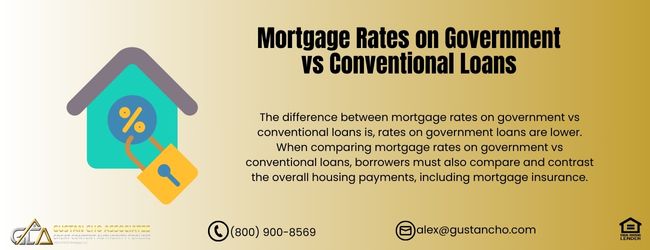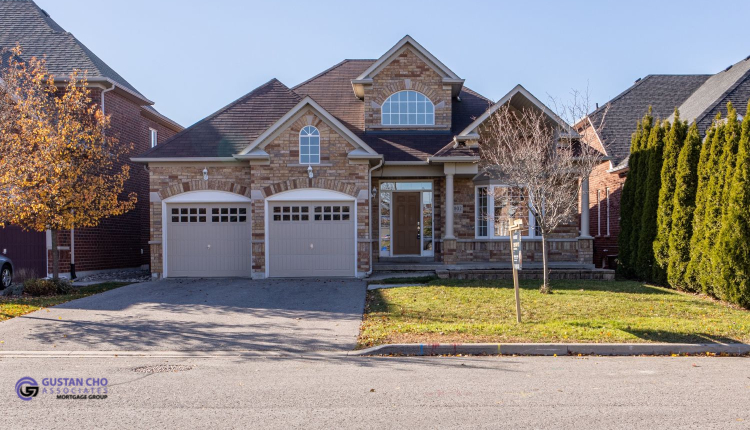HUD Guidelines vs Lender Overlays on FHA Loans

This guide covers understanding HUD guidelines vs lender overlays on FHA loans. We will discuss the basic HUD guidelines vs lender overlays on FHA loans. By the end of the guide, our viewers of this guide will fully understand that not all lenders have the same lending guidelines on FHA loans. Many borrowers are under the impression that all FHA loans have one set of lending requirements since they are backed by the government, HUD, the parent of FHA. In one sense, it is correct that all HUD-approved mortgage lenders need to meet the minimum HUD-agency mortgage guidelines. However, individual mortgage lenders are allowed to have an additional layer of lending requirements above and beyond the minimum HUD guidelines.
What is the Difference Between HUD and FHA Loans
Not all mortgage lenders have the same mortgage lending requirements on FHA loans. The higher lending requirement from an individual lender that is above and beyond the minimum HUD guidelines is called lender overlays. A lender can impose overlays on just about anything. We will cover more about common typical lender overlays in the following paragraphs. Due to lender overlays, not all mortgage lenders have the same lending requirement on FHA loans. Borrowers can get denied for an FHA loan from a lender even though they meet all the minimum HUD guidelines on FHA loans because the lender may have overlays one one or more HUD guidelines. In the following paragraphs, we will cover the difference between HUD guidelines vs lender overlays on FHA loans. Speak With Our Loan Officer for Mortgage Loans
HUD Guidelines vs Lender Overlays: What is the Difference
FHA loans is the most popular mortgage loan program in the United States. FHA stands for the Federal Housing Administration and is part of HUD. The United States Department of Housing and Urban Development, or HUD, is the parent of the Federal Housing Administration or FHA. FHA is a governmental entity and is not a mortgage lender. Many consumers think that the Federal Housing Administration is a lender and that FHA originates fund, and service FHA loans. However, this is not the case. April Ramirez, an associate contributing editor of GCA FORUMS explains HUD guidelines vs lender overlays on FHA loans.
The role of FHA is to insure FHA loans that have been originated by HUD approved banks and mortgage companies in the event the borrower were to default on their FHA loans.
In order for an FHA loan to be insurable, Lenders need to be HUD-approved mortgage lenders. Every FHA loan they originate and fund need to meet the minimum HUD mortgage lending guidelines. In the event, if the FHA loan does not meet the minimum HUD mortgage lending guidelines, that FHA loan is not insurable. That is why lenders are extremely careful when underwriting FHA loans. In this article, we will discuss the difference between HUD guidelines vs lender overlays on FHA loans.
What Are HUD Guidelines vs Lender Overlays
HUD, the parent of FHA, sets minimum mortgage lending guidelines for FHA loans. HUD mortgage guidelines are outlined on HUD’s 4000.1 FHA Handbook which has been launched last September 14, 2015. It outlines all of the minimum FHA mortgage lending requirements that all lenders need to follow. However, HUD-approved lenders can set additional mortgage guidelines that surpass the minimum FHA loan requirements. These additional mortgage lending requirements that are in additional to the minimum FHA lending guidelines are called FHA lender overlays. Chad Bush of GCA FORUMS Mortgage Group explains the difference between HUD guidelines vs lender overlays:
The difference between HUD guidelines vs lender overlays is HUD does not require borrowers to pay outstanding collection accounts to qualify for an FHA loan.
Individual lenders may require collection and charge-off accounts be paid off to qualify for an FHA loan with their mortgage company. Not all mortgage lenders have the same lending requirements on FHA loans. Many lenders have overlays on collection and charge-off accounts on FHA loans. We will be covering the common overlays imposed by individual mortgage lenders on FHA loans in this guide on HUD guidelines vs lender overlays.
HUD Guidelines vs Lender Overlays: Lenders With No Overlays
HUD does not require you to pay off collection accounts and/or charge off accounts for you to qualify for an FHA loan. Over 80% of our borrowers at GCA FORUMS Mortgage Group are folks who could not qualify at other lenders due to their lender overlays. Most of our borrowers could not qualify and close on their home loans at other lenders because they either gotten a last-minute mortgage loan denial or could not qualify for an FHA loan with a particular mortgage lender. Many borrowers were turned down by other lenders due to their overlays on collection accounts and charge off accounts. Many lenders require that the borrower pay off outstanding collection accounts and/or charge off accounts in order for them to qualify for an FHA loan. This holds true even though HUD says that you DO NOT have to pay off your outstanding collection accounts and/or charge off accounts to qualify for an FHA loan. Speak With Our Loan Officer for Mortgage Loans with No Overlays
HUD Guidelines vs Lender Overlays on Collection and Charge-Off Accounts
HUD will insure a HUD-approved lender on an FHA loan they originate and fund: This holds true even though the borrower has outstanding and unpaid collection accounts and charged off accounts. However, the HUD-approved mortgage lender often will require that. This holds true even if HUD gives it their blessing and not require to pay off collections and charge off accounts, they will set their own standards with FHA loans, called FHA lender overlays, and require them to pay it off. Lender overlays differ from mortgage lender to lender. Some lenders may have an overlay on one lending requirement while another lender does not. Some lenders may have a 640 credit score overlays while a different lender may have a 620 credit score overlays on FHA loans. GCA FORUMS Mortgage Group does not have lender overlays on government and conventional loans.
HUD Guidelines vs Lender Overlays on Collection and Charge-Off Accounts
Whatever the minimum HUD Guidelines whatever it states on the automated findings, that is what GCA FORUMS Mortgage Group go by. We have no lender overlays on collection and charge-off accounts. Whatever HUD says about collection or charge off accounts, that is what we go by. HUD says collection accounts and charged off accounts do not have to be paid off to qualify for FHA loans. FHA classifies collection accounts into three categories:
- Non-Medical Collection Accounts
- Medical Collection Accounts
- Charge Off Collection Accounts
How Collection Accounts Affect DTI Calculations
HUD does require lenders to take into account outstanding unpaid non-medical collection accounts into the borrower’s debt to income ratio calculations if the outstanding unpaid collection accounts total more than $2,000. As mentioned earlier, HUD classifies collection accounts into three different categories:
- Non-Medical Collection Accounts
- Medical Collection Accounts
- Charge Off Collection Accounts
If the sum of the outstanding non-medical collection accounts is greater than $2,000, mortgage underwriters need to take 5% of the outstanding non-medical collection account balance. Underwriters need to use it as a monthly debt payment of the borrower.. They need to use that figure to calculate the borrower’s debt-to-income ratios. This holds true even though the borrower does not have to pay for it. If the 5% of the outstanding collection account balance is a large amount and will disqualify the borrower, then the borrower can enter into a written payment agreement with the creditor.
How HUD Guidelines vs Lender Overlays Affect FHA Loan Approval With Collection vs Charge-Off Accounts
Whatever written monthly payment agreement that is agreed upon on the written payment agreement, that monthly amount will be used as a monthly debt payment in the calculation of the borrower’s DTI in lieu of the 5% of the outstanding collection account balance. There are no minimum monthly payment seasoning requirements and the date the written payment agreement is executed is the date it will be in force. 5% of the outstanding balance on charge off account amount is NOT taken into consideration as part of the borrower’s monthly debt and will be used in the borrower’s debt-to-income ratio calculations. Medical collection accounts are exempt from debt-to-income ratio calculations under HUD guidelines on Collection accounts. It does not matter the outstanding collection amount balance. Charge off accounts are exempt from debt to income ratio calculations only if the file gets an approve/eligible per Automated Underwriting System.
HUD Guidelines vs Lender Overlays: Common Overlays on Collection and Charge-Off Accounts
Just because HUD says that a borrower does not need to pay off outstanding collection accounts and charge off accounts, lenders may say otherwise and have their own lending requirements besides what HUD says. This is called FHA Lender Overlays which are extra requirements implemented by each individual lender on top of the HUD minimum mortgage lending requirements Common overlays on collection accounts implemented by a lender may be that a borrower cannot have any collection accounts and charge off accounts that are outstanding needs to be paid off. Some lenders will require a two-year seasoning requirement after a collection account and charge off has been paid off in order to qualify for an FHA loan. Other lenders will implement a lender overlay that a collection account or charge off account balance cannot be greater than $5,000 or may have a certain cap. Click Here to Apply For Mortgage Loans
Qualifying For FHA Loan With Lenders With No Overlays
There are many borrowers who call me where they could not qualify at other lenders due to outstanding collection accounts or charge off accounts. One example is a borrower who could not qualify at a mortgage company because he had $14,000 in outstanding collection accounts. The lender he went to wanted him to pay off his outstanding collection balance and make sure that a zero collection balance was reporting on his credit reports before they would proceed with processing his FHA loan. Under HUD Guidelines, the borrower does not have to pay off that collection account. That borrower came to us and we ended up closing on his FHA loan. If you are told that you do not qualify for an FHA loan due to outstanding collection accounts or charge off accounts, please contact us at 800-900-8569 or text us for faster response. Or email us at gcho@gustancho.com. We have no lender overlays on outstanding collection accounts and/or charge off accounts and just go off the automated findings from the Automated Underwriting System.
FAQ on HUD Guidelines vs Lender Overlays
How Does HUD Guidelines vs Lender Overlays Affect Obtaining an FHA loan?
HUD guidelines elaborate on the minimum requirements for FHA loans. These cover a score of 500 or above, 3.5% down for those with a score of 580 and above. It also include DTI ratios usually capped at 46.9% front-end and 56.9% back-end%. Those guidelines are considered to be the worst-case scenario. Every lender has to comply with HUD guidelines for you to qualify for an FHA loan.
What do the lender overlays mean, and how are they different from the HUD provisions?
Overlaying is where individual lenders apply more than HUD guidelines require. For instance, while HUD allows a minimum credit score of 500 for FHA loans. A lender may take theirs to be 620 or more. Overlays give lenders greater power over risk by enforcing stricter rules when approving borrowers.
Why Do Lenders Use Overlays?
- Lenders use overlays to minimize the risk of credit default.
- Government-backed loans are FHA, VA, and USDA loans and each agency has its minimum agency mortgage guidelines.
- However, every lender has the right to add additional guidelines on top of the minimum agency mortgage guidelines by HUD, VA, and USDA.
- Some lenders may think the agency guidelines is too lenient and are not willing to incur a loss through legal litigation when a loan defaults.
- Due to layered risk on the lenient agency guidelines of HUD, VA, and USDA, each lender can offset their risk by adding lender overlays.
- Considering this, lenders apply overlays to protect themselves as they are likely doing business with borrowers who are much more risk-averse than HUD’s guidelines recommend.
Can I shop around for a lender with fewer overlays?
Yes. Specific particulars differ with different lenders’ overlays. Therefore, if one lender denies your approvable loan overlays, another lender will approve the loan using only HUD’s guidelines. It is also beneficial to make comparisons of different lenders, especially if you are nearly fulfilling the basic FHA requirements but missing one lender’s additional requirements. GCA FORUMS Mortgage Group has a national reputation of not having any lender overlays on government and conventional loans.
What are common lender overlays on FHA loans?
Some overlays are placed by lenders, which include:
- Increased credit score minimums: HUD, in its guidelines, does not consider a score lower than 500 as a reason not to repay a loan; even so, many lenders will want a score above 620.
- Lower debt-to-income (DTI) ratio requirements: HUD lets one go up to a 46.9% front-end and 56.9% back-end debt-to-income ratio. Some lenders may have DTI requirements lower than that, 31% front-end and 43% back-end, for instance.
- Extra income documentation: HUD has thresholds regarding the amount of documentation required for verifications. Still, some lenders may require more than that, such as detailed proof of income or assets.
How do overlays impact the manual underwriting process in the context of FHA loans?
HUD permits manual underwriting in some situations, such as when an AUS has denied the loan. That said, lenders may opt not to provide manual underwriting or may limit the number of loans approved under manual underwriting. If you are turned down based on automated underwriting system instead of a manual process, it is important to determine whether the lender accepts manual loans and what overlays would be required.
May lenders change their overlays?
Overlays are limitations imposed by lenders. Therefore, cannot be outlined as standard provisions. Hence, you may ask them about other loans, and if those are not offered, you can always search for a lender with more reasonable restrictions.
How are overlays required for lower credit score efforts considered by the borrowers?
Most borrowers with a credit score between 500 and 579 are still eligible for an FHA loan as per the HUD policy, though many lenders do not want to authorize them because of overlays. Under these circumstances, it is very important to locate lenders who follow the HUD guidelines only and do not impose unnecessary additional credit score requirements.
Is it true that there are lenders who will not impose overlays on FHA loans?
Yes. Mortgage lenders such as FHA-approved lenders and mortgage brokers are amongst such lenders. These lenders appear to have lower lending risk requirements for borrowers compared to more traditional lenders. For example, policies on DTI and credit history scores might be more forgiving. GCA FORUMS Mortgage Group has a national reputation for not having lender overlays on government and conventional loans.
Where Can I Determine Whether Some Lenders Have Overlays?
When pursuing an FHA loan, ask the lender whether there are any added requirements that HUD does not define. In particular, solicit information on the acceptable score, date, certain reserves, and even documents. Lenders are expected to be open about their overlays. This FAQ section provides detailed answers to queries stressing the contrasts between HUD requirements and lenders’ overlays regarding FHA loans.
Mortgage Denials on FHA Loans due to Lender Overlays
What if I meet all the HUD requirements but fail to qualify because the lender has additional requirements?’
You can try applying with a different lender if you meet HUD’s guidelines but are denied due to a lender’s overlay. Not all lenders impose the same overlays. Some may be more consistent with HUD’s bare minimum requirements. If that is applicable, seeking the help of an FHA-approved mortgage broker may also enable you to access a mortgage lender that is more suitable to your needs. For example, over 80% of the borrowers at GCA FORUMS Mortgage Group (Powered by Gustan Cho Associates) are folks who were denied by other lenders due to the lender overlays.
Is there a pattern among lenders concerning overlays on FHA loans
On average, most lenders put some level of overlays, though there are a number of them who only limit themselves to FHA loan requirements set by HUD. They are usually Direct lenders or lenders who specialize in Government loans. While shopping around, you may even look out for such lenders who are in the market, stating ‘no overlays.’
HUD Guidelines vs Lender Overlays on FHA Streamline Refinance
Although HUD allows FHA to streamline refinance mortgages with essentially no documentation, appraisal, or income verification. Some lenders will impose overlays that would make refinancing harder. For instance, a mortgage company may impose an overlay that requires a borrower’s repayment ability to be verified by checking their credit records. This even if it is not specifically stated in HUD guidelines and regulation.
- Are and do overlays differ from one jurisdictional area to another?
- If yes, how do they do that?
- Are they interchangeable across the states or the country?
Since overlays are policies of different lenders, they tend to be individual to the lender’s state broadness. If a lender operates in several states, however, overlays will apply in all those states. Other local laws or market dynamics may also determine what kind of overlays lenders in certain parts impose. For example, lenders in states with higher foreclosure rates may adopt more stringent overlays.
Do overlays vary with particular loan types, including FHA, VA, or USDA loans?
Overlays are often found in fact-finding loans like FHA, VA, and USDA loans because lenders favor minimizing their exposure to loss with people who do not comply with the usual mortgage requirements. On the other hand, overlay systems may still be implemented even in conventional loans. More overlays focus on FHA loans because of the lower credit score rate and the down payment amount established by HUD in this case.
Speak With Our Loan Officer for Mortgage Loans
This guide on HUD Guidelines vs Lender Overlays Was Written and UPDATED on September 8th, 2024.






https://ai.invideo.io/workspace/9b091797-32ce-4ae8-9bbc-0f40171ab828/v30-copilot/b8a7deef-b912-4d6e-b585-f805db22a036